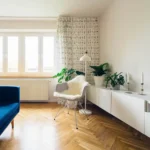Get ready to be amazed as we take you on a tour of the world’s top 50 world’s strangest buildings! These structures break all the rules, from defying gravity to playing tricks on your eyes. Architects worldwide have unleashed their creativity to build these mind-bending, unique landmarks.
SNAIL HOUSE (SOFIA, BULGARIA)
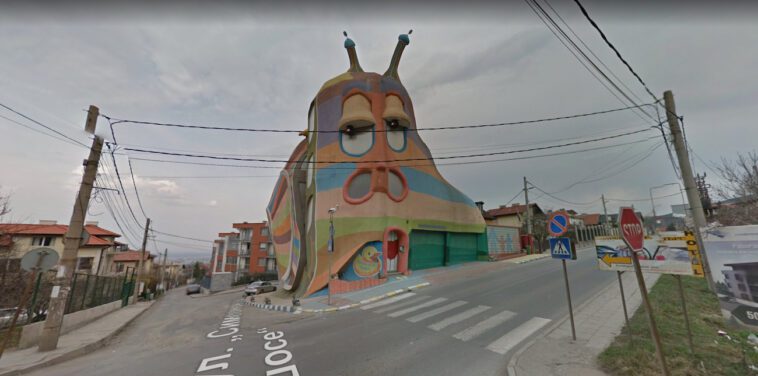
The Snail House in Sofia, Bulgaria, crafted by architect Simeon Simeonov, is a playful and colorful wonder. Standing at 20 meters, its snail-like exterior, radiating with blues and oranges, defies tradition, while inside, each floor surprises with unique features, blending creativity and function to make it Sofia’s standout architectural gem.
DRUZHBA HOLIDAY CENTER (YALTA, UKRAINE)
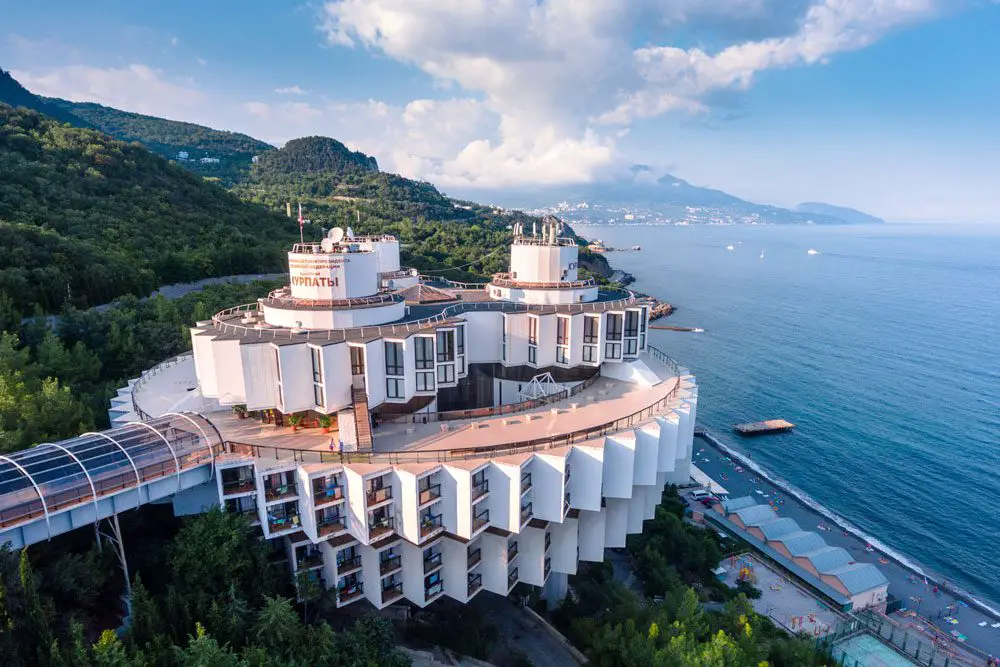
The Druzhba Holiday Center, set on a hillside overlooking the Black Sea, is a symbol of bold Soviet architectural experiments. Designed by Igor Vasilevsky, its unique “stool on three legs” structure challenges gravity, offering stunning views and sparking foreign intrigue with rumors of a hidden rocket launch site. Beyond its modern look, Druzhba is like a time-traveling space paradise from the 1950s. It captures the Soviet idea of treating workers to something special, and today, it’s not just for workers – anyone can come and enjoy its story.
STONE HOUSE (GUIMARAES, PORTUGAL)
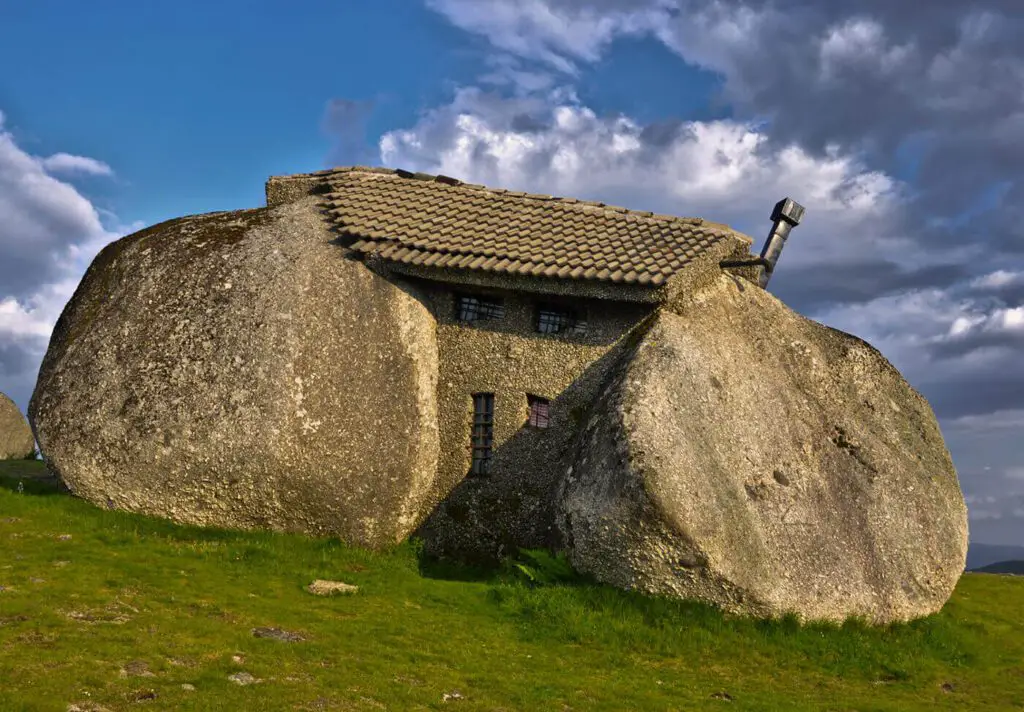
Casa do Penedo, also known as the Stone House, is a fascinating mountain retreat in northern Portugal. Completed in 1974 by a private family with a special vision, the house creatively incorporates four large granite boulders as its foundation, walls, and ceiling, giving it a unique rustic and prehistoric charm. Evolving from a family vacation home to a museum, Casa do Penedo, situated at Rua da Pedra, Santa Cristina de Fafe, beautifully showcases the blend of human creativity and nature in a quiet setting.
PARC GUELL (BARCELONA, SPAIN)

Parc Guëll in Barcelona, Spain, is a UNESCO World Heritage Site that combines art and nature, thanks to the visionary architect Antoni Gaudí. Initially conceived as a garden city by Eusebi Guëll, it opened in 1926, showcasing Gaudí’s unique mosaic technique and notable features like the dragon stairway. Spread across 17 hectares, it has transformed into a public park and cultural landmark, highlighting Gaudí’s artistic genius and his harmonious integration of architecture with the natural environment.
NATIONAL THEATRE (BEIJING, CHINA)
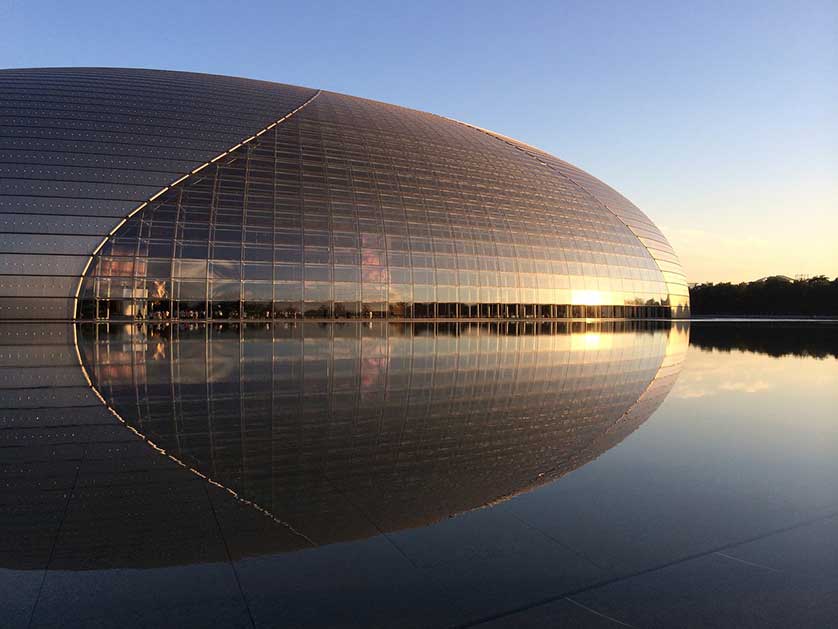
The National Theatre in Beijing, China, designed by architect Paul Andreu, opened on July 22, 2007, at a cost of 3.5 billion yuan. This modern structure symbolizes China’s cultural influence and features impressive auditoriums, including a grand opera house, concert hall, and theatre, located at 2 West Chang’an Avenue, Xicheng District, Beijing.
KANSAS CITY PUBLIC LIBRARY PARKING GARAGE (KANSAS CITY, USA)
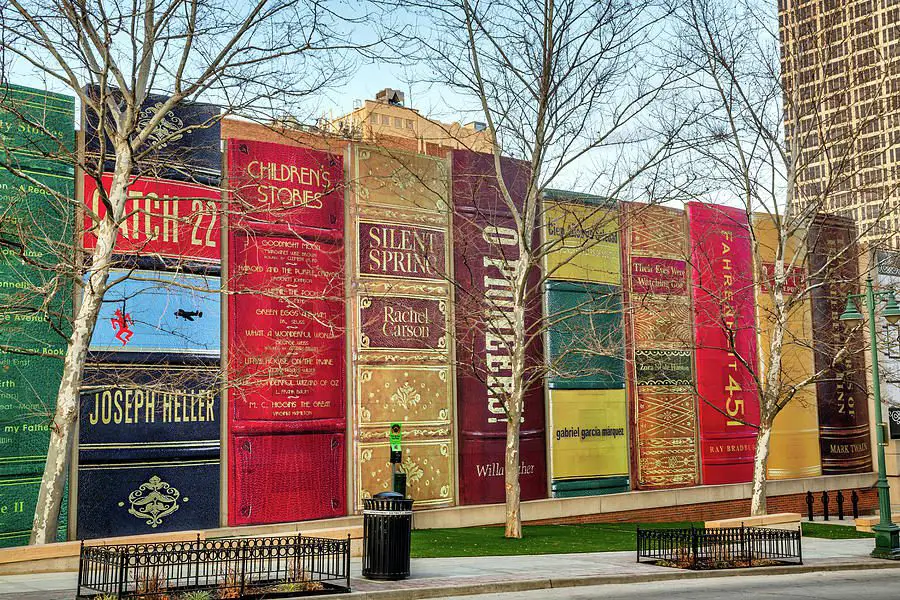
The Kansas City Public Library Parking Garage, designed by Dimensional Innovations and opened in 2004, is a unique structure featuring a giant “Community Bookshelf” facade that showcases the city’s love for literature. This 22,500-square-foot parking garage, located at 114 W 10th St in Kansas City, Missouri, serves both as a functional space for library patrons and as a public art piece, emphasizing the importance of reading and learning in the community.
THE CROOKED HOUSE (SOPOT, POLAND)
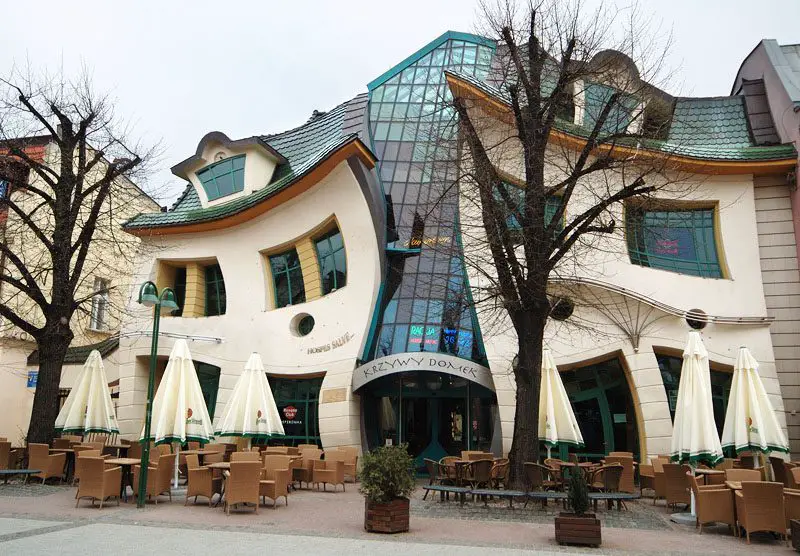
The Crooked House in Sopot, Poland, is a unique building inspired by the whimsical drawings of Polish and Swedish artists, designed by architects Szotyńscy & Zaleski, and opened in 2004. This architectural marvel, known for its surreal, optical illusion style, serves as a tourist attraction and commercial space, located at 53 Bohaterów Monte Cassino Street.
ROTATING TOWER (DUBAI, UAE)
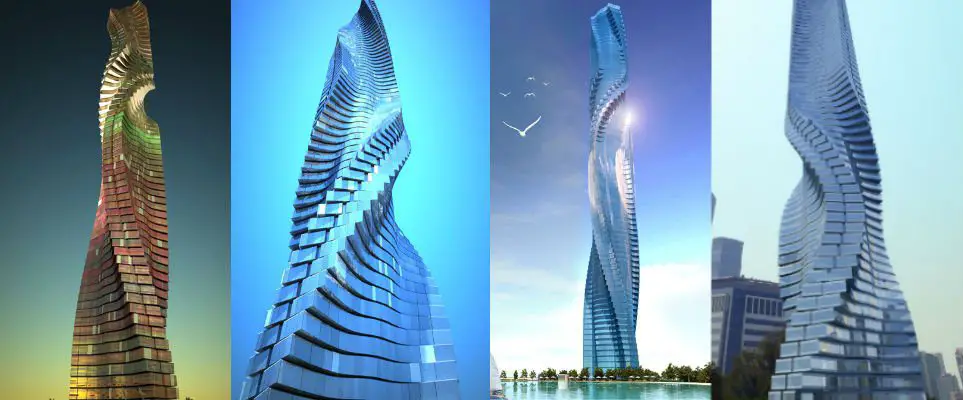
The Rotating Tower in Dubai, UAE, designed by architect David Fisher, is a proposed 420-meter high skyscraper with 80 floors that features unique rotating floors allowing for dynamic views and living experiences. It aims to be the world’s first prefabricated skyscraper, incorporating sustainable technologies like wind turbines and solar panels, redefining construction methodologies with over 90% of its structure manufactured off-site. Although the project was announced in 2008, construction has not yet started.
LOW IMPACT WOODLAND HOUSE (WALES, UK)

The Low Impact Woodland House, also known as the “hobbit-house,” is a sustainable and innovative architecture in the heart of Wales. Constructed by architect Simon Dale in just four months, the house blends with nature, featuring cob and straw bale construction, a grass-turfed roof, and an inviting interior with a central fireplace. This private residence exemplifies environmentally conscious design, emphasizing a deep connection with the surroundings in Cynghordy, Wales.
NAUTILUS HOUSE (MEXICO CITY, MEXICO)
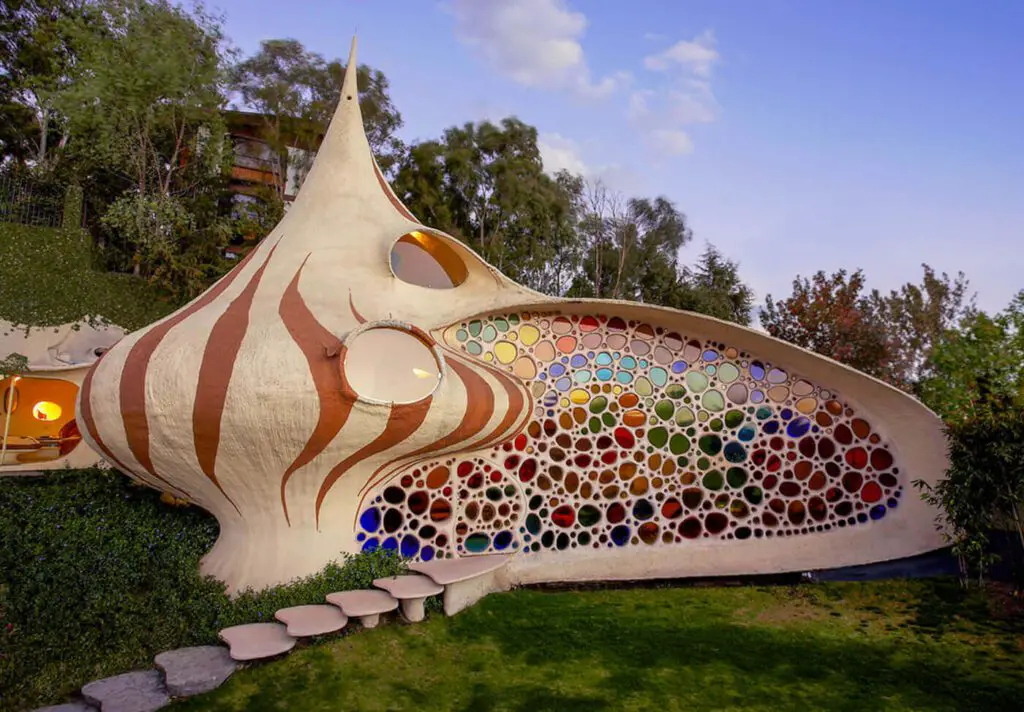
The Nautilus House in Mexico City, designed by Javier Senosiain, is a unique dwelling inspired by the shape of a nautilus shell. Built in 2007, its curved exterior represents an architectural departure from traditional homes. Inside, the open-plan space with flowing pathways and natural plants creates a harmonious connection with nature, making it both an aesthetic and engineering marvel.
SAGRADA FAMILIA (BARCELONA, SPAIN)
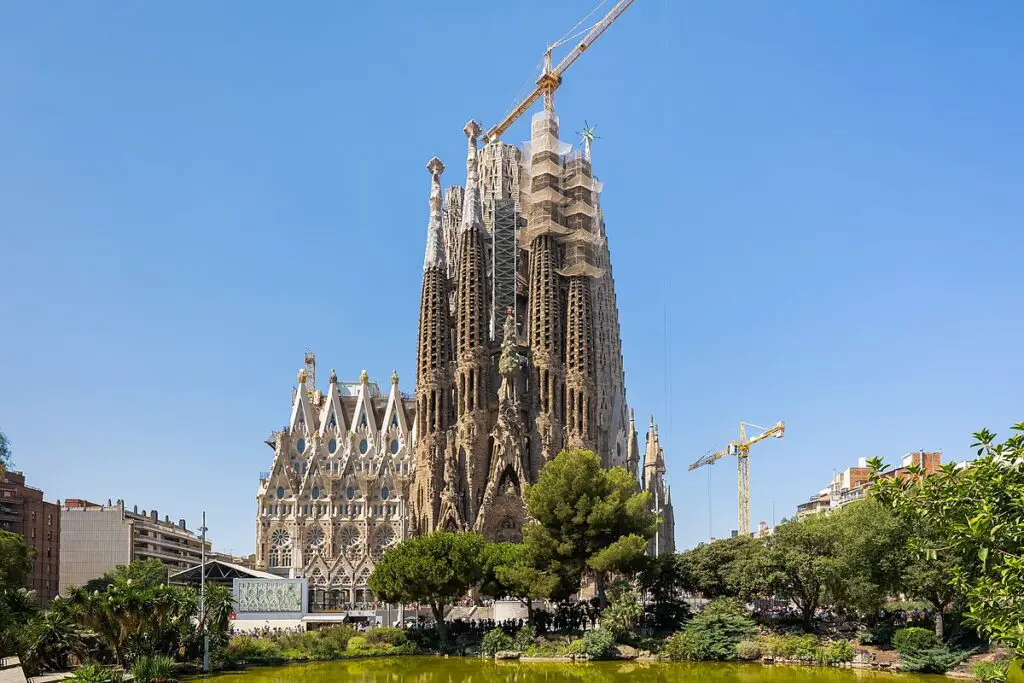
The Sagrada Familia is an ongoing architectural wonder in Barcelona. Its construction began in 1882 under Antoni Gaudí’s visionary guidance. Its grand exterior showcases intricate facades depicting Christian mythology, while inside, tree-like pillars and stained-glass windows create a harmonious blend of nature and spirituality. Despite being unfinished, the basilica welcomes visitors to explore its interior and learn about its rich history.
WALDSPIRALE (DARMSTADT, GERMANY)
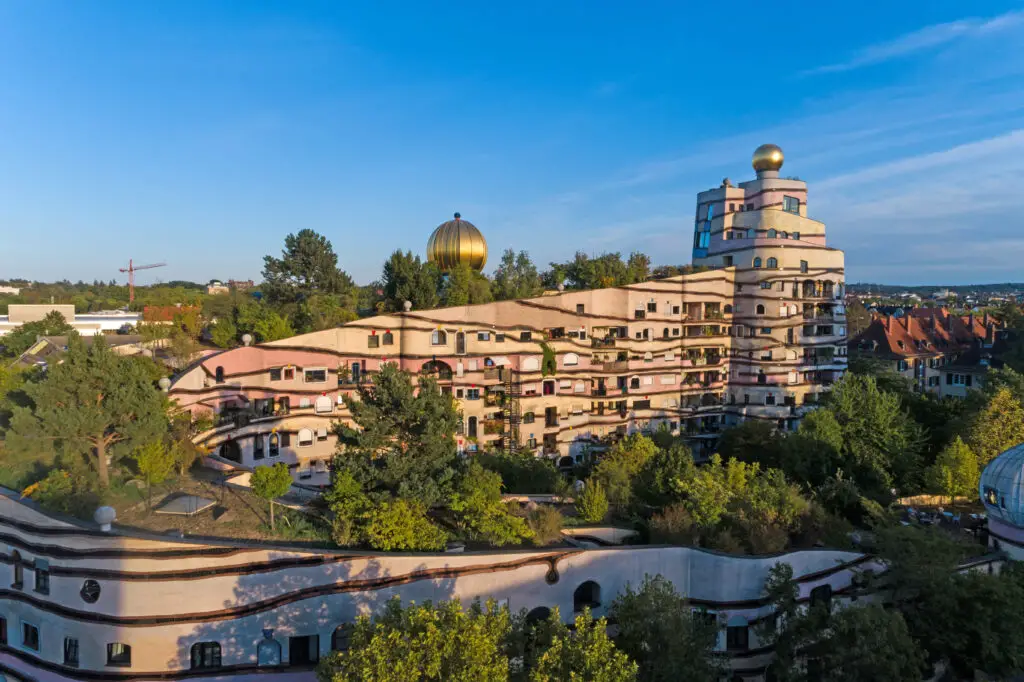
The Waldspirale in Darmstadt, Germany, designed by architect Friedensreich Hundertwasser, is a unique 12-story building blending nature and architecture. Completed in 2000, it features a vibrant, organic design, with an interior showcasing diverse apartments and public spaces. The building’s rooftop transforms into an urban garden, fostering sustainability and offering a serene retreat, welcoming visitors to explore during designated hours.
CASA BATTLO (BARCELONA, SPAIN)
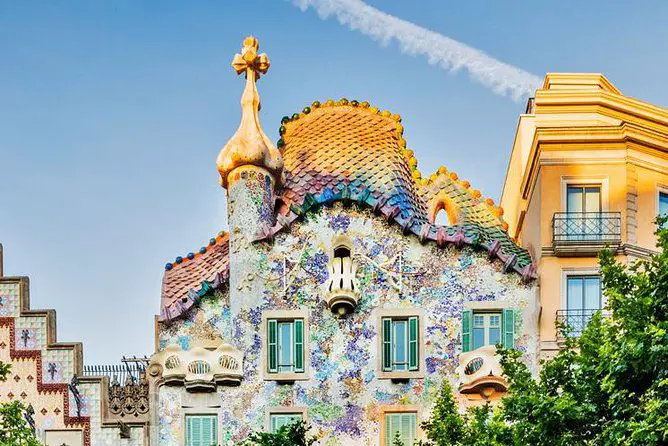
Casa Batlló, a masterpiece by architect Antoni Gaudí in Barcelona, showcases unique modernist architecture with colorful facades, an enchanting rooftop, and underwater-themed interiors. As a UNESCO World Heritage site, it stands as a cultural landmark, inviting visitors daily from 9:00 AM to 8:00 PM. Special events like Magic Nights offer a captivating experience, featuring live music and the opportunity to explore the architectural marvel in unique ways.
HABITAT 67 (MONTREAL, CANADA)
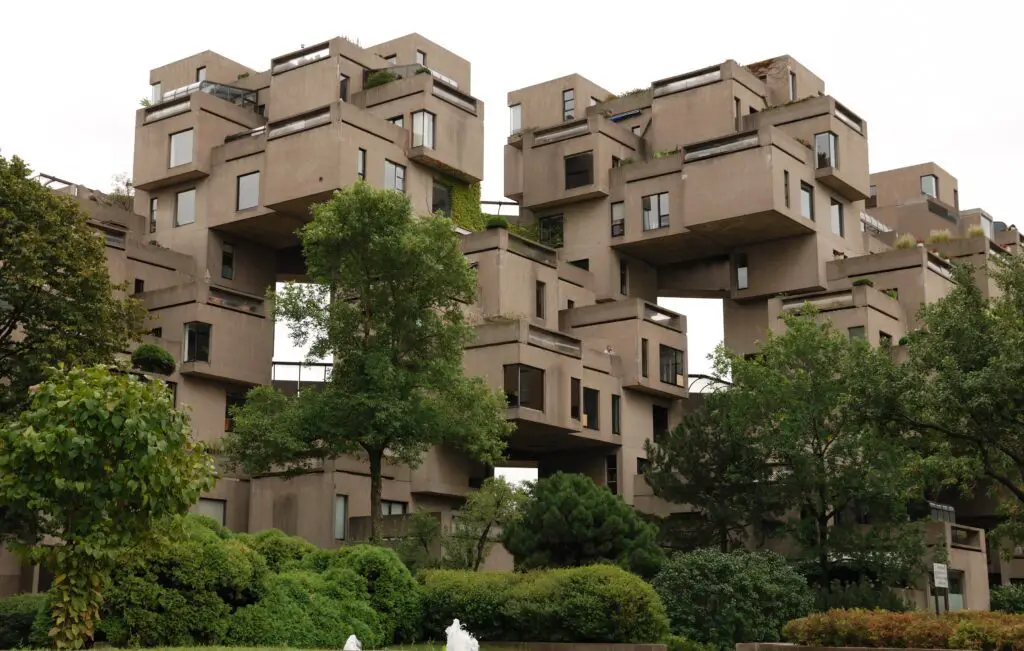
Habitat 67 in Montreal, designed by architect Moshe Safdie, is a unique residential complex known for its innovative Brutalist architecture and modular construction. With 146 residences featuring private outdoor spaces, it combines futuristic design with functionality. Despite its initial cost overage, Habitat 67 remains an iconic example of urban living, offering breathtaking views of the Montreal skyline.
THE CHURCH OF HALLGRIMUR (REYKJAVIK, ICELAND)
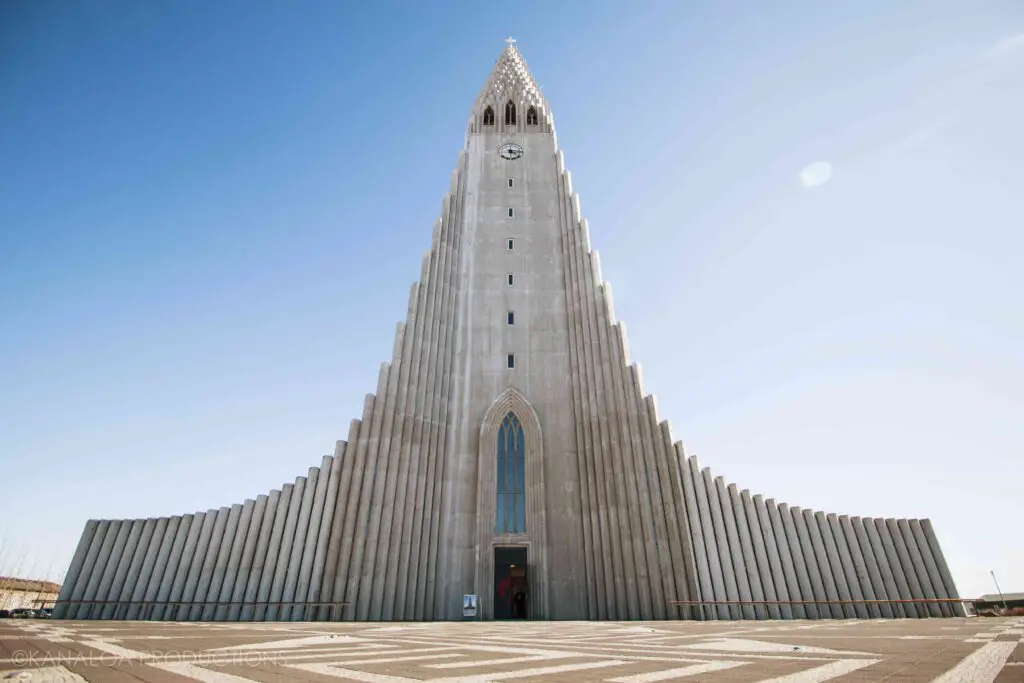
The Church of Hallgrímskirkja in Reykjavik, Iceland, is a striking architectural symbol inspired by the country’s natural beauty. Built over four decades, it stands at 74.5 meters, boasting an Expressionist style with basalt column influences. With a minimalist interior, a remarkable pipe organ, and an observation deck providing panoramic views of Reykjavik, the church serves both as a place of worship and a cultural landmark, reflecting Iceland’s deep connection to nature and spirituality.
PALAIS BULLES (CANNES, FRANCE)
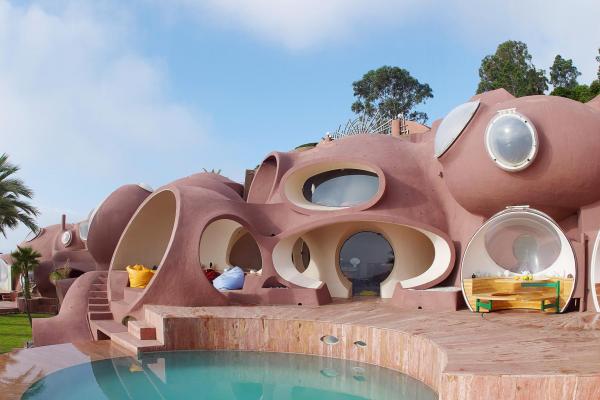
The “Bubble Palace,” or Palais Bulles, on the French Riviera, is a unique architectural marvel designed by Antti Lovag. With its unconventional, organic design and interconnected bubbles, it became iconic under the ownership of fashion designer Pierre Cardin. The future of this cultural gem remains uncertain, but its historical significance and innovative design continue to captivate admirers worldwide.
IDEAL PALACE (FRANCE)

The Ideal Palace in Hauterives, France, is an architectural marvel created by postman Ferdinand Cheval over 33 years, opening to the public in 1912. Born from Cheval’s passion and inspired by diverse influences, including Hindu temples and Medieval castles, the sprawling Palace features intertwining arches, mythical creatures, and a maze-like interior.
EARTH HOUSE 2 (LOSTORF, SWITZERLAND)
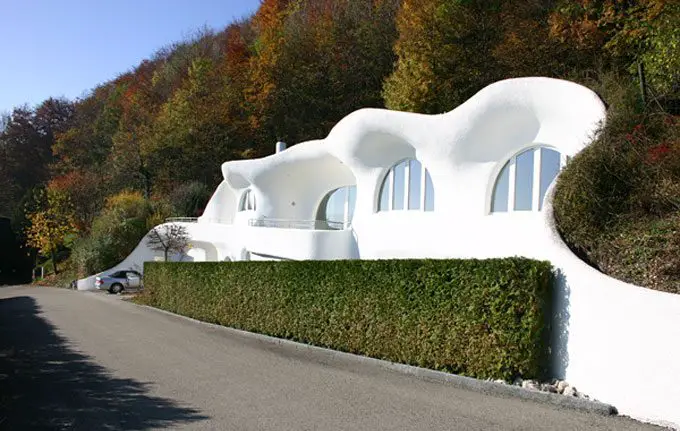
The Earth House in Lostorf, Switzerland, designed by architect Peter Vetsch, is a unique residential complex that integrates with the natural landscape, featuring a lush green rooftop and sustainable architecture principles. Its eco-conscious design utilizes the Earth as a primary building material, offering thermal insulation and minimizing environmental impact.
UPSIDE DOWN HOUSE (SZYMBARK, POLAND)

The Upside Down House in Szymbark, Poland, conceived by Daniel Czapiewski, is a unique architectural marvel symbolizing Poland’s post-Communist era. Opened in 2007, this thought-provoking tourist attraction features an inverted design both externally and internally, challenging visitors’ balance and perception. Operating as an entertainment venue, it reflects a society in upheaval and welcomes visitors daily from 9 AM to 6 PM.
ATOMIUM (BRUSSELS, BELGIUM)

The Atomium in Brussels, Belgium, designed by André Waterkeyn and started in 1958, is an iconic symbol of the Atomic Age and post-war optimism. This architectural marvel, resembling an enlarged iron crystal, features nine interconnected spheres, each representing an iron atom’s electrons. Open to the public, the Atomium serves as a museum, exhibition space, and panoramic viewpoint, attracting visitors to explore its history and futuristic design.
LA PEDRERA (BARCELONA, SPAIN)
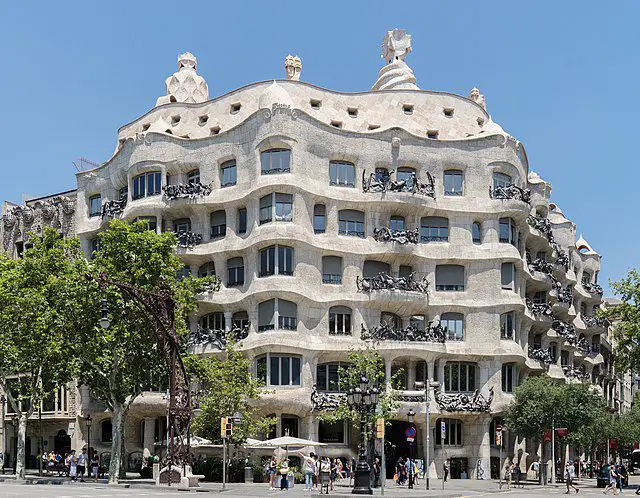
La Pedrera, also known as Casa Milà, is an iconic architectural masterpiece in Barcelona, Spain, designed by Antoni Gaudí and Josep Maria Jujol. Constructed from 1906 to 1912, it showcases Gaudí’s innovative and nature-inspired design with an undulating façade and surreal rooftop chimneys. Functioning as a UNESCO World Heritage site, La Pedrera houses the Catalunya La Pedrera Foundation, offering cultural and educational activities.
GUGGENHEIM MUSEUM (BILBAO, SPAIN)
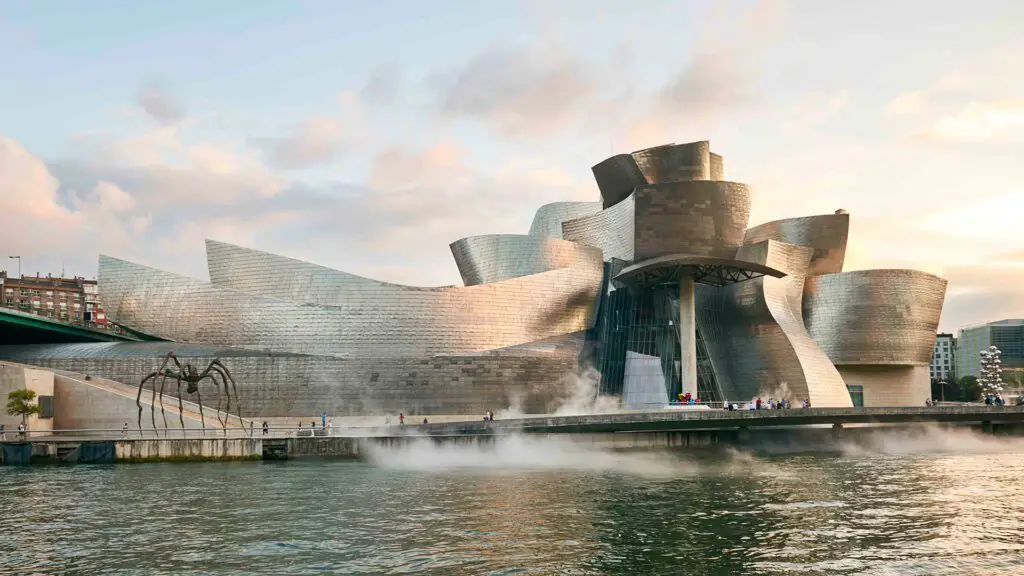
The Guggenheim Museum in Bilbao, designed by architect Frank Gehry, is a groundbreaking masterpiece known for its Deconstructivist style, featuring titanium-clad, ship-like forms that reflect the city’s shipbuilding heritage. Opened in 1997 at a cost of $89 million, the museum spans 24,000 square meters, providing a dynamic exhibition space that revitalized Bilbao, illustrating the transformative impact of architecture on urban landscapes.
THE NEVERWAS HAUL (CALIFORNIA, USA)
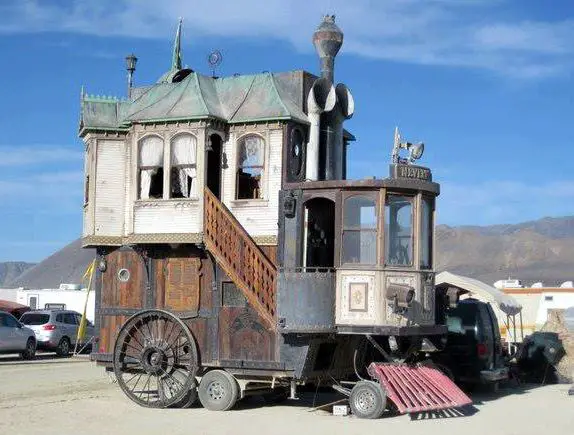
The Neverwas Haul, a unique three-story Victorian house on wheels, captivates with its steampunk charm and unconventional design. Created in 2006 from 75% recycled materials, it roams events like Burning Man and Maker’s Faire, serving as a mobile hub for a creative community.
EARTH HOUSE 1 (DIETIKON, SWITZERLAND)
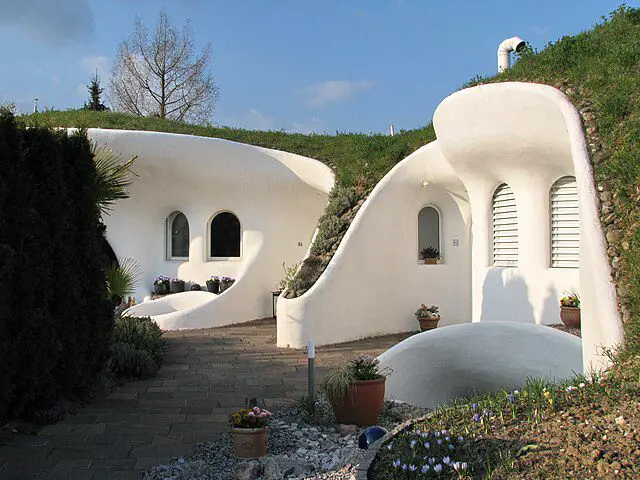
The Earth Houses in Dietikon, Switzerland, crafted by architect Peter Vetsch, are a groundbreaking example of sustainable living seamlessly integrated into the natural landscape. These unique residences, nestled underground with green roofs, prioritize eco-consciousness, offering a range of sizes and fostering a sense of community.
BORGUND STAVE CHURCH (BORGUND, LÆRDAL, NORWAY)
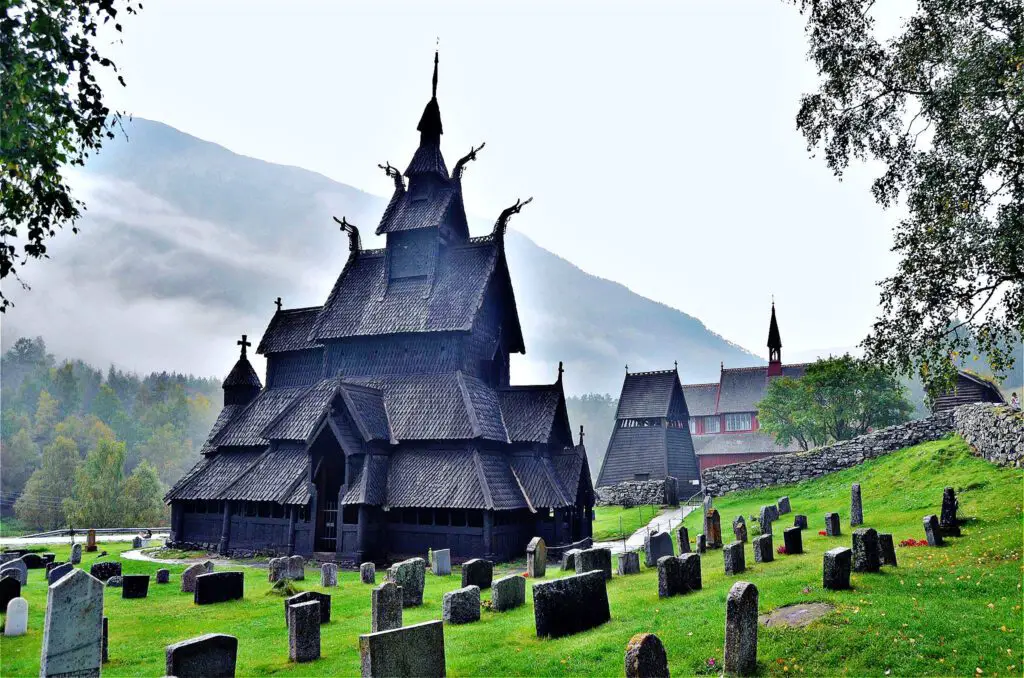
The Borgund Stave Church, located in Norway’s Laerdal, is a captivating medieval masterpiece showcasing Norse craftsmanship and spiritual devotion. Built around 1180, its unique basilica plan and intricate wood carvings tell stories of saints, mythical creatures, and biblical scenes.
DANCING HOUSE (PRAGUE, CZECH REPUBLIC)
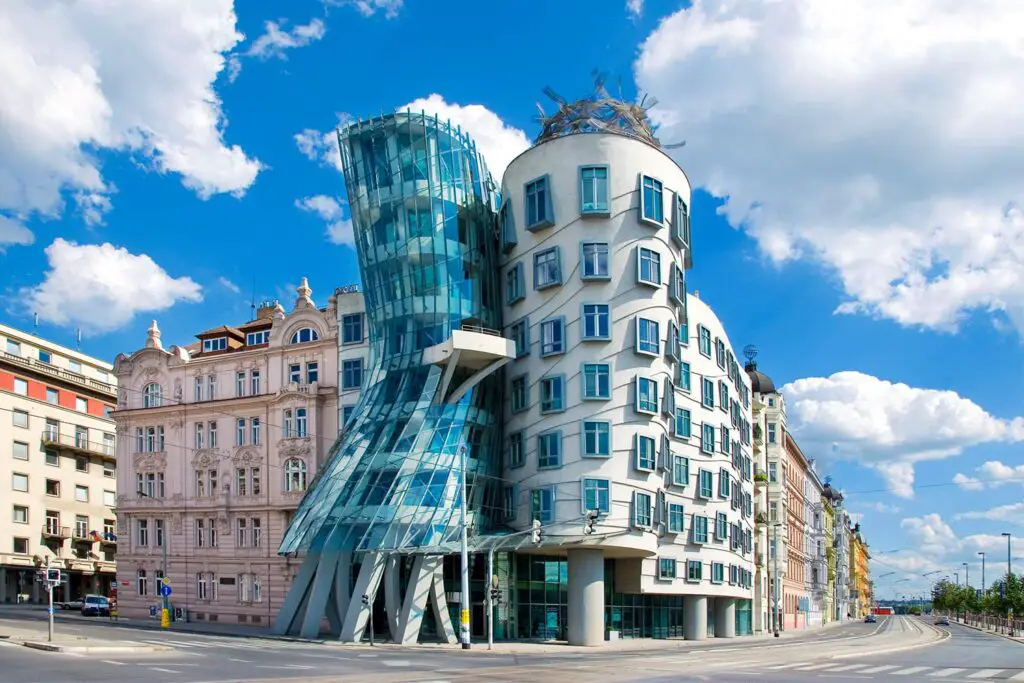
The Dancing House, also known as ‘Fred and Ginger,’ is a striking architectural marvel in Prague, Czech Republic, designed by Vlado Milunić and Frank Gehry. Completed in 1996 at a cost exceeding 3 billion CZK, this deconstructive masterpiece with an eccentric dancing shape houses offices, a stylish restaurant named ‘Ginger & Fred,’ a boutique hotel, and ‘The Dancing House Gallery.’
MUSEUM OF CONTEMPORARY ART (NITEROI, RIO DE JANEIRO, BRAZIL)
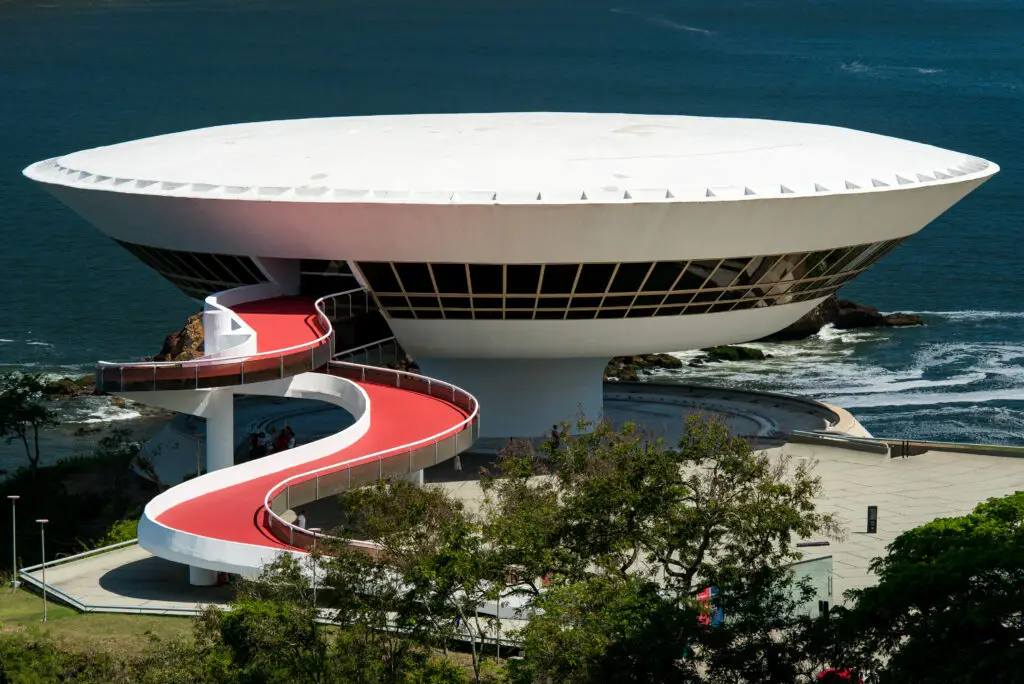
The Museum of Contemporary Art (MAC) in Niteroi, Rio de Janeiro, designed by architect Oscar Niemeyer, is a futuristic landmark and a testament to modern architecture’s daring creativity. Completed in 1996 at a cost of $2 million, its distinctive flying saucer shape and circular exhibition hall create an imposing yet inviting space.
WOODEN GAGSTER HOUSE (ARCHANGELSK, RUSSIA)
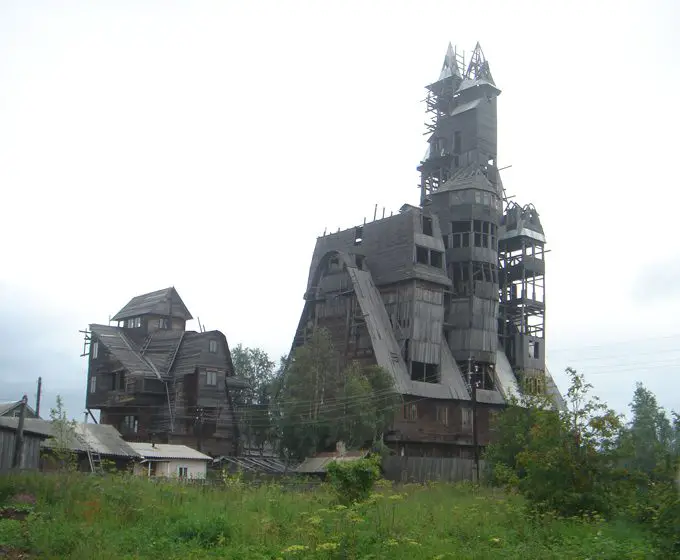
The Gagster House in Arkhangelsk, Russia, created by entrepreneur Nikolai Petrovich Sutyagin, was a unique wooden structure that gained international attention for being over 13 stories tall, almost securing a place in the Guinness Book of World Records. Built in the 1990s, it combined Gothic and pagoda influences, becoming a popular tourist attraction. Despite its fame, legal issues led to its dismantling in 2008, and a fire in 2012 marked the end of this iconic wooden skyscraper, leaving behind a story of architectural innovation and passion for wood.
NATIONAL STADIUM (BEIJING, CHINA)
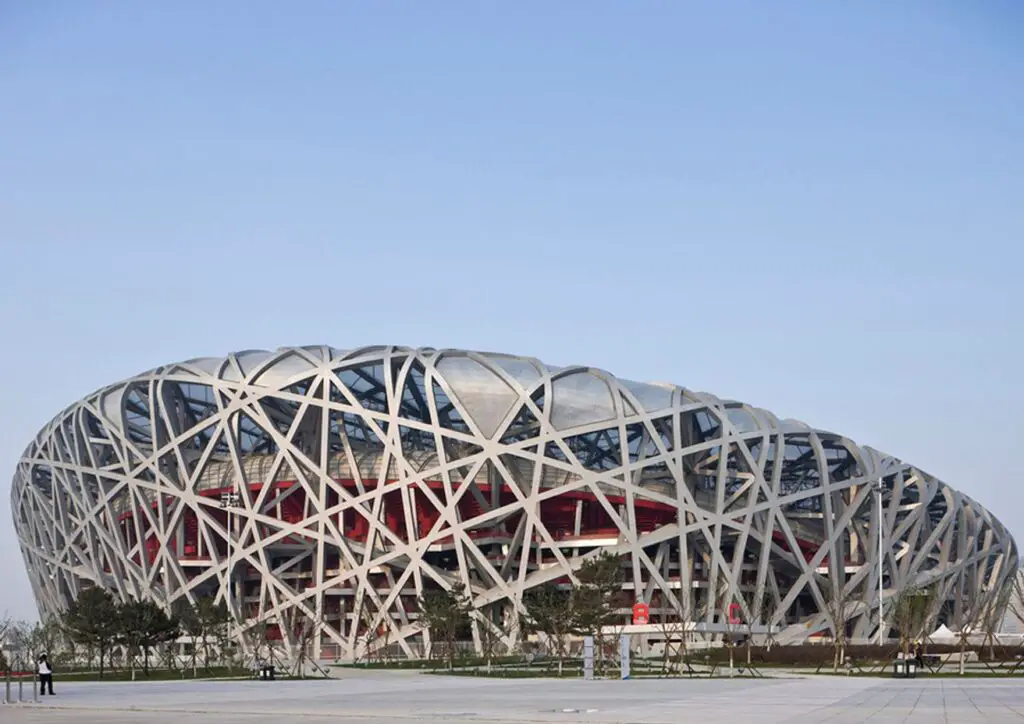
The National Stadium, also known as the Bird’s Nest, in Beijing, China, is an iconic architectural marvel designed by Herzog & de Meuron, Li Xinggang, and Ai Weiwei. Completed in 2008 at a cost of $500 million, it features an intricate lattice steel exterior resembling a bird’s nest, challenging traditional norms. The stadium, with a capacity of over 80,000, has hosted major international events, symbolizing China’s commitment to sporting excellence and innovation in modern architecture.
HANG NGA GUESTHOUSE/CRAZY HOUSE (DALAT, VIETNAM)
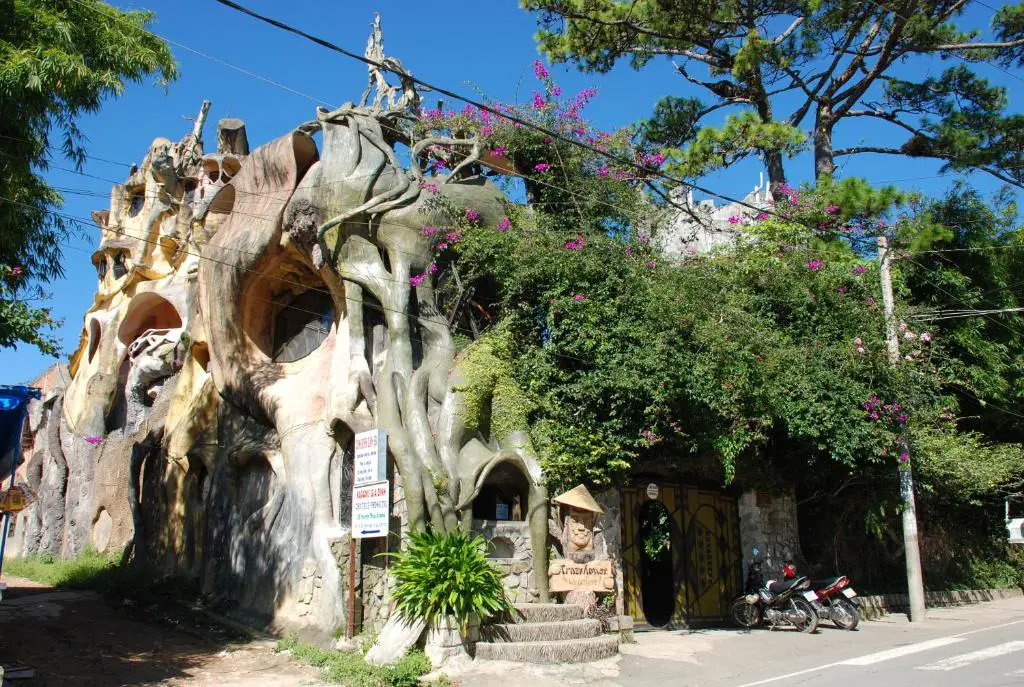
The Hang Nga Guesthouse, also known as the “Crazy House,” is a unique architectural wonder in Da Lat, Vietnam, designed by visionary architect Dang Viet Nga. Started in 1990 and continuously evolving, the Crazy House exemplifies modernism with its organic, interconnected forms inspired by nature. It offers an immersive residential experience with specially themed rooms, handcrafted furnishings, and vibrant colors, making it a surreal wonderland open to visitors daily.
WONDER WORKS (PIGEON FORGE, USA)
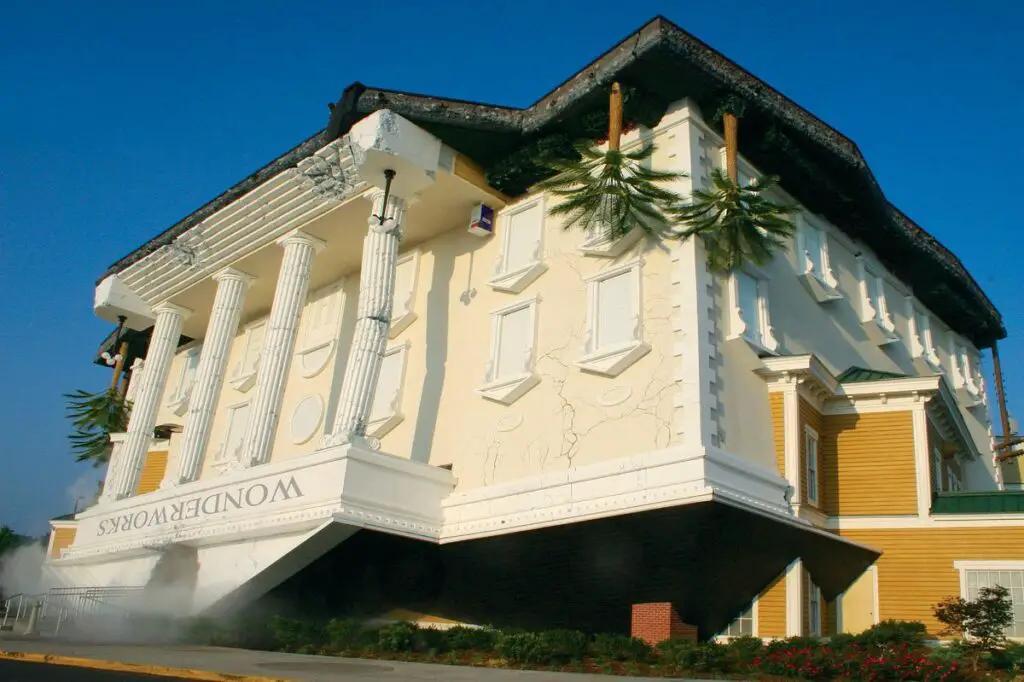
WonderWorks Pigeon Forge in Tennessee, USA, is an architectural marvel designed by Terry Nicholson, resembling an upside-down building that defies gravity. Opened in 2007 at a cost of $40 million, the three-story, 55,000-square-foot structure combines Ancient-Roman architectural elements with interactive exhibits, providing an educational and entertaining experience.
MONTREAL BIOSPHERE (MONTREAL, CANADA)

The Montreal Biosphere, a symbol of environmental sustainability, was designed by Buckminster Fuller and constructed for Expo 67. Despite a fire in 1976, the structure was repurposed by Environment Canada in 1990 into an interactive museum focused on environmental education and climate change.
LONGABERGER BASKET BUILDING (NEWARK, USA)
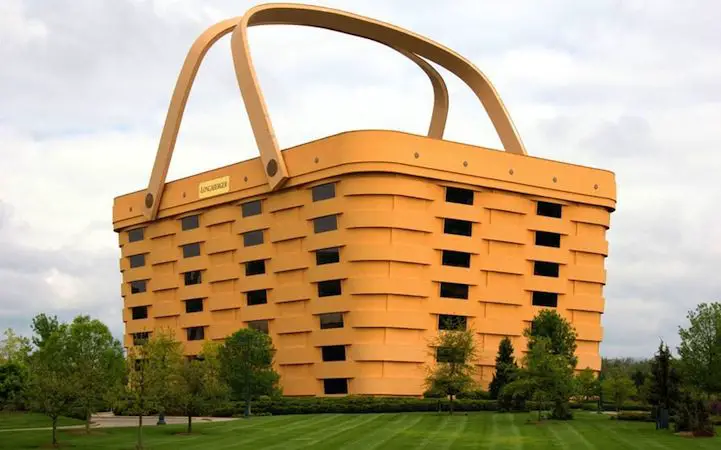
The Longaberger Basket Building in Newark, USA, designed by NBBJ, is a whimsical architectural marvel shaped like a giant picnic basket, showcasing postmodernism’s blend of novelty and tradition. Constructed in 1997 at a cost of $30 million, it initially served as the corporate headquarters for the Longaberger Company. With seven stories, a woven-texture exterior, and handcrafted basket-themed interiors, it stands as a beloved local landmark despite current reports of abandonment, with plans to potentially transform it into a hotel.
GHERKIN BUILDING (LONDON, UK)
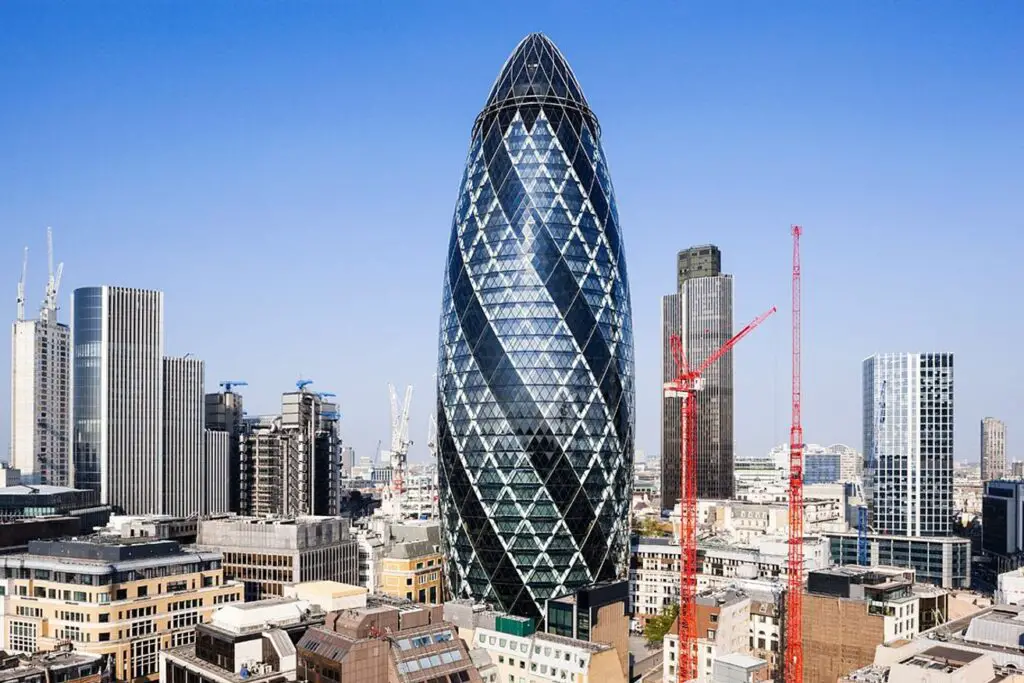
The Gherkin, officially known as 30 St Mary Axe in London, designed by Foster + Partners and Arup Group, is a neo-futuristic skyscraper that emerged after the 1992 Baltic Exchange bombing. Completed in 2003, it stands 180 meters tall with 41 floors, featuring a distinctive design earning it the nickname “The Gherkin.” Despite challenges, such as a glass panel incident in 2005, it received accolades, including the 2004 Stirling Prize, and underwent ownership changes, becoming a cultural and architectural landmark in London’s financial district.
OLYMPIC STADIUM (MONTREAL, CANADA)

Montreal’s Olympic Stadium, known as “The Big O,” is a monumental architectural marvel designed by French architect Roger Taillibert, featuring a distinctive leaning tower and a seating capacity of 56,000. Constructed for the 1976 Summer Olympics at a cost of CAD 1.47 billion, the stadium’s interior design fosters unity, hosting various events beyond sports, such as concerts and trade shows.
WALT DISNEY CONCERT HALL (LOS ANGELES, USA)

Walt Disney Concert Hall in Los Angeles, designed by architect Frank Gehry, is a captivating blend of art and engineering, serving as the home of the renowned Los Angeles Philharmonic. Initiated by a generous $50 million donation from Lillian B. Disney in honor of her late husband, Walt Disney, the concert hall’s construction faced challenges but ultimately transformed the city’s musical landscape.
HONEY BEE HIVE HOUSE (JERUSALEM, ISRAEL)

Honey Bee Hive in Jerusalem, designed by architect Zvi Hecker, is a unique housing project created in the aftermath of the 1967 Six-Day War. Completed in 1975, the complex’s innovative design features non-rectangular components arranged in a zigzag layout, resembling a hand or leaf. Hecker’s avant-garde approach, combining tradition with modernity, has made Ramot Polin a distinctive geometric marvel and a testament to Jerusalem’s architectural evolution, sparking discussions on its genius and eccentricity.
CUBIC HOUSES/KUBUS WONINGEN (ROTTERDAM, NETHERLANDS)

The Cubic Houses in Rotterdam, designed by architect Piet Blom in the late 1970s, are iconic structures known for their tilted cube design. Situated above the Blaak Subway Station, these houses form a “living forest” in the heart of Rotterdam, showcasing architectural innovation. Each cube is residential, standing on a hexagonal pole, tilted 45 degrees, with a unique interior layout, and one house has been transformed into a museum (Kijk-Kubus) for visitors to experience Cubic living.
TEA POT GAS STATION (ZILLAH, USA)
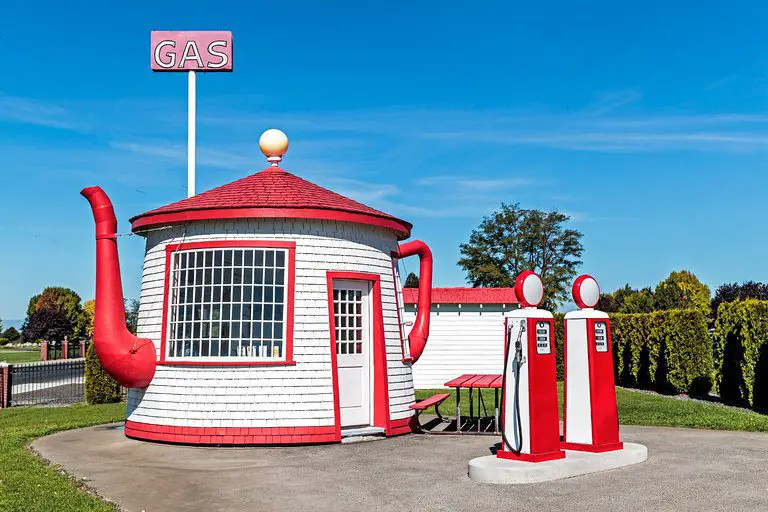
The Teapot Gas Station in Zillah, USA, is a unique and whimsical architectural creation that stands out for its distinctive teapot shape. This unconventional gas station was built in the 1920s, capturing the spirit of novelty architecture prevalent during that era.
SHIP HOUSE (DALMATIA, CROATIA)

The Ship House in Dalmatia, Croatia, is an amazing building that combines modern living with the sea. It looks like a big ship and sits high up, offering great views of the sea and the land around it. Inside, it’s spacious and cozy, with a design inspired by ships. It’s not just a house; it’s a special place that celebrates Dalmatia’s connection to the sea and shows how creative architecture can be.
MILWAUKEE ART MUSEUM (MILWAUKEE, USA)

The Milwaukee Art Museum in the USA is a breathtaking architectural gem designed by Santiago Calatrava, resembling a majestic bird with its movable wings. Beyond its stunning appearance, the museum boasts a diverse collection of artworks, offering a cultural feast for visitors.
LOTUS TEMPLE (DELHI, INDIA)

The Lotus Temple in Delhi, India, is a stunning architectural marvel designed by Fariborz Sahba, resembling a blossoming lotus flower. Opened in 1986, this Bahá’í House of Worship promotes unity and peace, welcoming people of all faiths.
EXPERIENCE MUSIC PROJECT (SEATTLE, WA, USA)
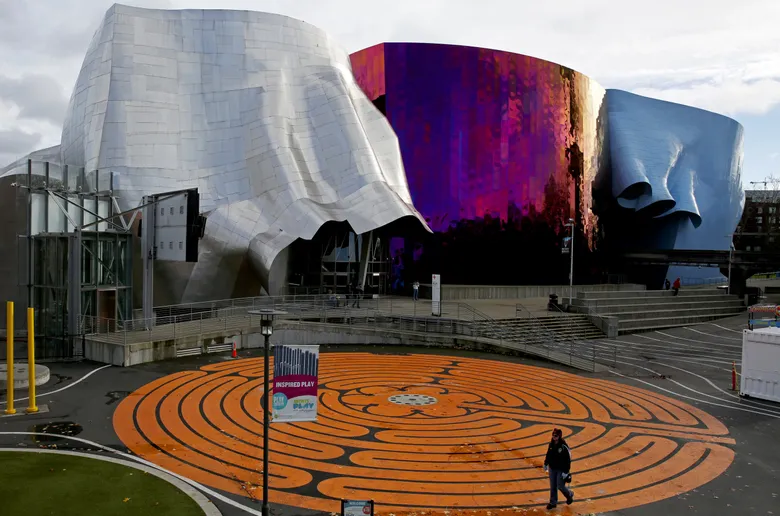
The Museum of Pop Culture (MoPOP) in Seattle, founded by Paul Allen in 2000, not only showcases the diverse realms of music, science fiction, and more but also features a visually striking architectural design by Frank Gehry, resembling a “smashed electric guitar.” With 140,000 square feet of space, MoPOP offers experiential galleries, interactive exhibits, and a celebration of musical icons like Jimi Hendrix and Nirvana.
SOLAR FURNACE (ODEILLO, FRANCE)

The Odeillo Solar Furnace in Font-Romeu-Odeillo-Via, France, is a monumental structure with a 54-meter height, constructed between 1962 and 1970. This pioneering solar furnace, comprising 10,000 mirrors, achieves temperatures exceeding 5,430 degrees Fahrenheit, playing a crucial role in high-temperature thermal studies and energy conversion research, making it a recognized Historical Monument since 2009.
SEATTLE CENTRAL LIBRARY (SEATTLE, USA)

The Seattle Central Library, designed by architects Rem Koolhaas and Joshua Prince-Ramus, opened in 2004, showcasing a unique postmodern design with glass and steel elements. Standing at 185 feet tall, the library offers a dynamic space for community engagement, technological exploration, and an extensive collection of over one and a half million books.
RIPLEY’S BELIEVE IT OR NOT! MUSEUM (ONTARIO, CANADA)
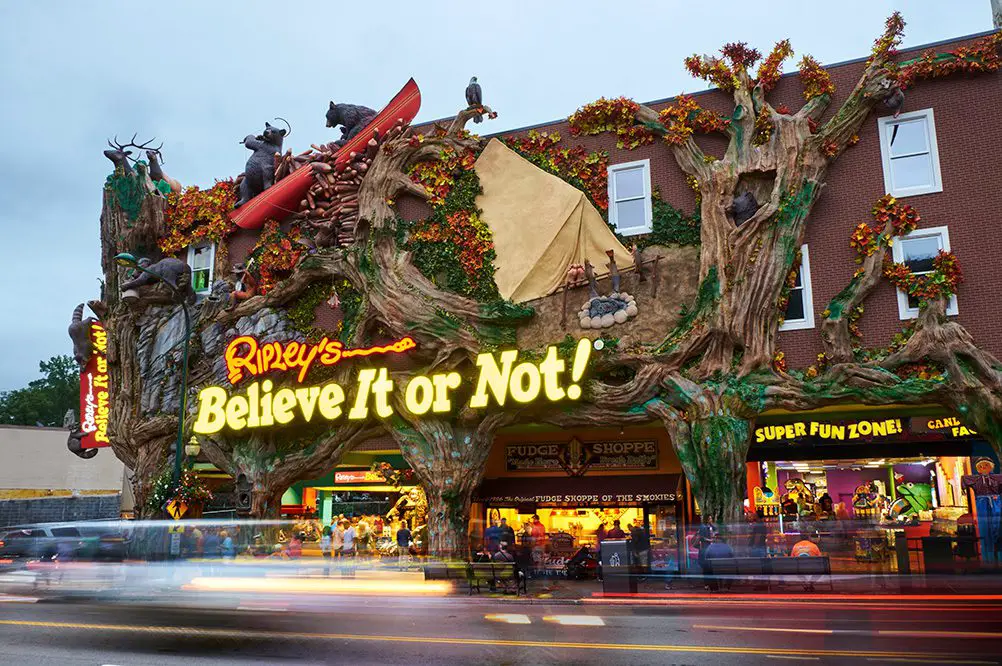
Ripley’s Believe It or Not! Museum in Ontario, Canada, located in Niagara Falls, is a captivating destination showcasing extraordinary tales and bizarre artifacts collected by Robert Ripley. The museum, with its distinctive architectural flair resembling a toppled-over Empire State Building, underwent significant renovations and now stands as the most significant and valuable Ripley’s Believe It or Not! Museum globally.
HOUSE ATTACK (VIENA, AUSTRIA)
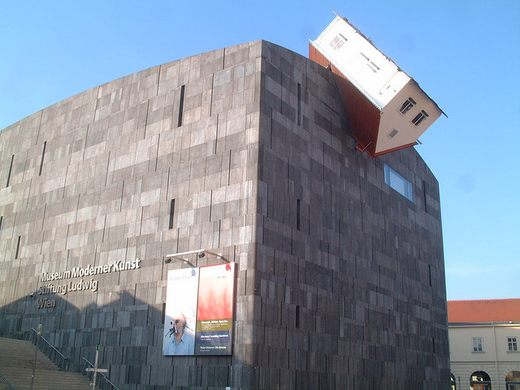
House Attack in Vienna, created by artist and architect Erwin Wurm, was a striking architectural sculpture challenging norms. Opened in 2006, it featured a suburban house seemingly embedded in the modernist MUMOK building, symbolizing the clash between domestic life and high art. While dismantled, House Attack remains a symbol of artistic audacity, sparking discourse and pushing the boundaries of architectural and artistic possibilities.
DEVICE TO ROOT OUT EVIL (CALGARY, CANADA)
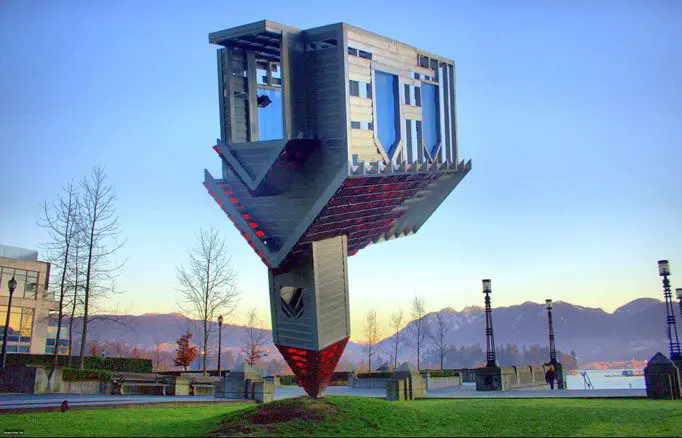
The Device to Root Out Evil in Calgary, Canada, created by artist Dennis Oppenheim, is an unconventional architectural sculpture challenging traditional perceptions. Opened as part of the Contemporary Art Museum of Calgary in 1997, the inverted church structure sparked controversy with its unique design, inviting viewers to reconsider the conventional roles of religious and artistic spaces.
BANPO BRIDGE (SEOUL, SOUTH KOREA)

The Banpo Bridge in Seoul, South Korea, is a remarkable double-deck bridge, blending engineering innovation and artistic flair. Built between 1980 and 1982, it stands out with its adaptability to natural elements and serves as a cultural hub, hosting events and recreational spaces. The highlight is the Moonlight Rainbow Fountain, a Guinness World Record holder, symbolizing Seoul’s commitment to eco-friendliness and sustainable design, making the Banpo Bridge a dynamic symbol of modernity, community, and environmental consciousness in the heart of the city.
PUZZLING WORLD LAKE WANAKA (OTAGO, NEW ZEALAND)

Puzzling World in Lake Wanaka, Otago, New Zealand, is an extraordinary destination that blends optical illusions with recreational wonder. Founded by Stuart and Jan Landsborough in 1973, this iconic attraction showcases a blend of perplexing optical illusions, a challenging maze, and an unconventional leaning tower, offering visitors a delightful and mind-bending experience.


